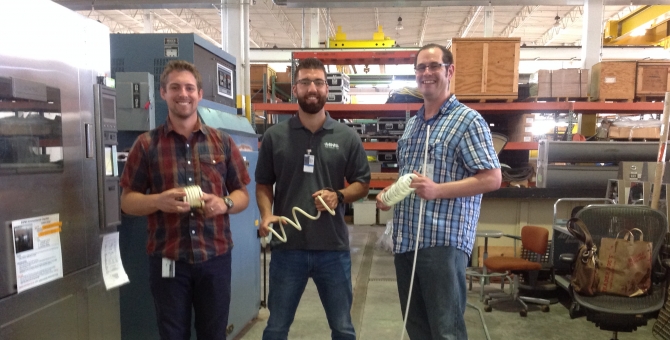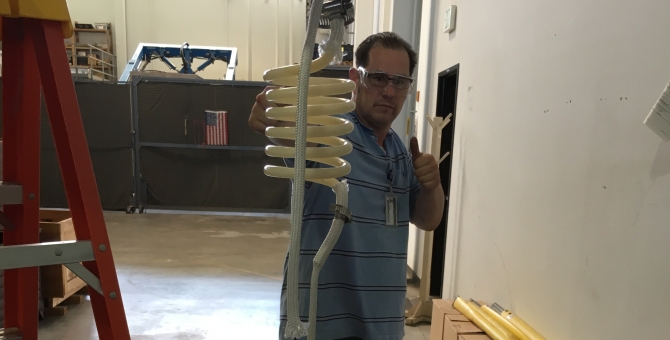Design of an Optical Fiber Link for Small Buoys
Project Description
In an era of large volume digital data transfer, the Navy requires rapid communications with a variety of sea-floor-based ocean sensors. These sensors record vital information such as salinity, temperature and ocean currents. The data transmitted to monitoring stations is used for both research and defense. Optimally, the tethering system would incorporate an optical fiber cable because of its ability to transfer large amounts of data quickly. However, optical fibers may break if subject to large tensile stress. Our team has been tasked with designing a prototype tethering system for small buoys that incorporates an optical fiber cable that is stiff enough to alleviate excessive strain caused by ocean waves and currents, but soft enough to keep the buoy afloat. We first used analytical spring models to design a system that would meet the requirements. After brainstorming different suspension methods we chose a coiled spring. We developed a manufacturing process that includes an oven and a mandrel to form the spring. We tested the system by hanging weights and using a motor to cycle the spring at different extensions. We compiled our results and compared it against our theoretical data. Our testing indicates that the prototype shielded the optical cable from experiencing excessive strain by maintaining a negligible transmission loss. Additionally, our measured spring constant suggests that our spring system is soft enough to keep the buoy afloat. These promising results provide the groundwork for further exploration as the Navy continues to develop this technology.















